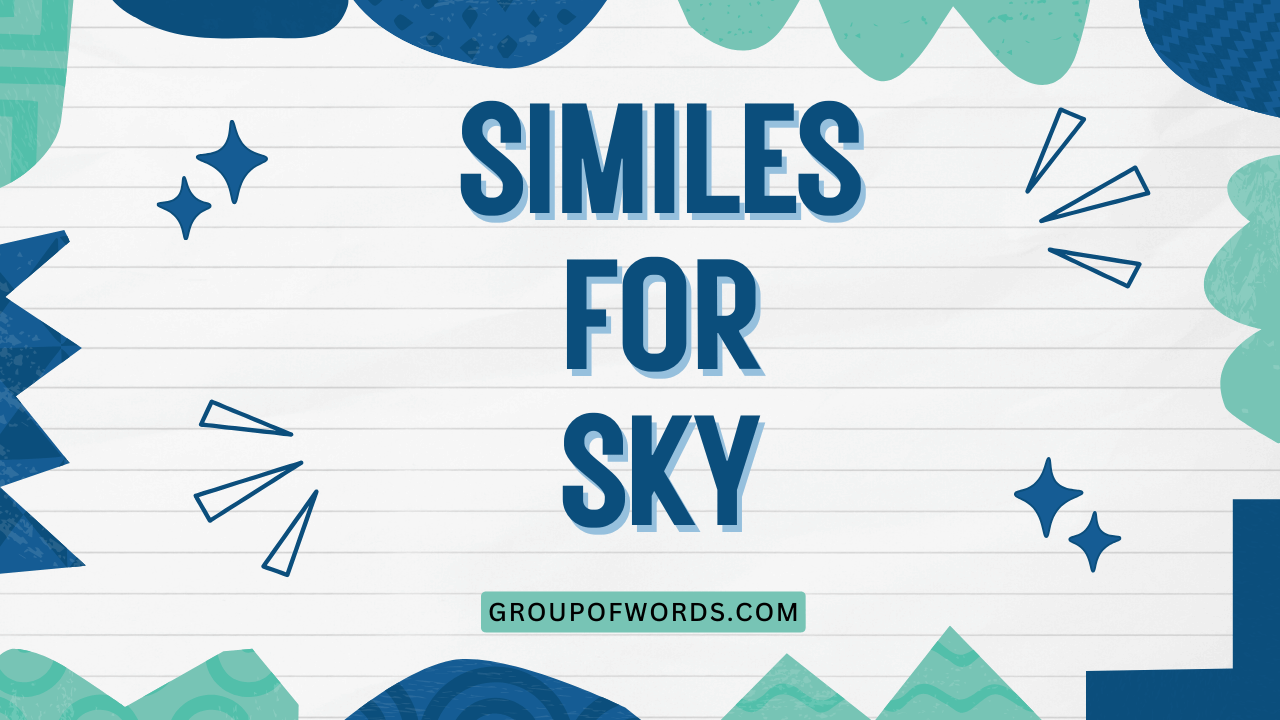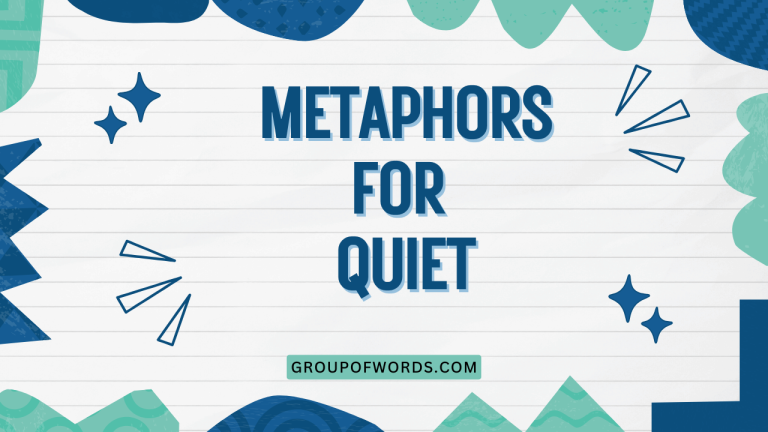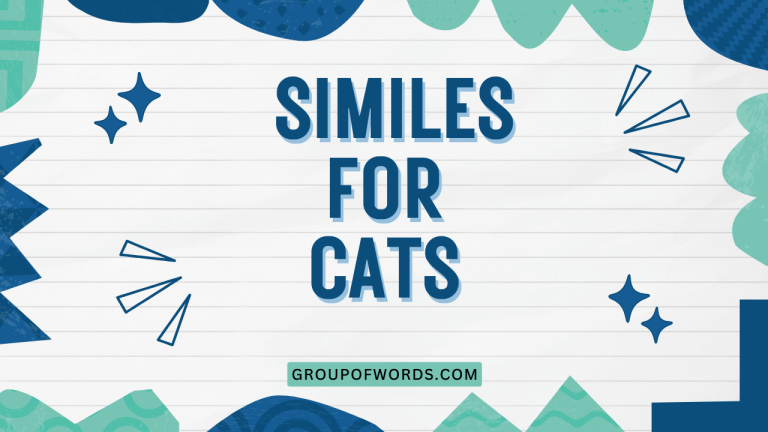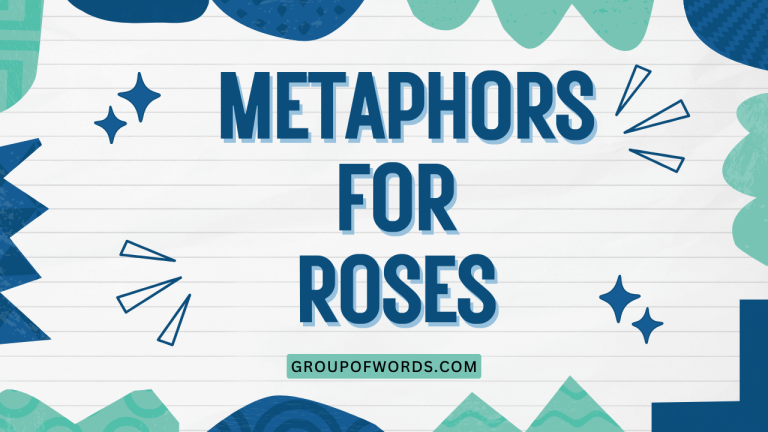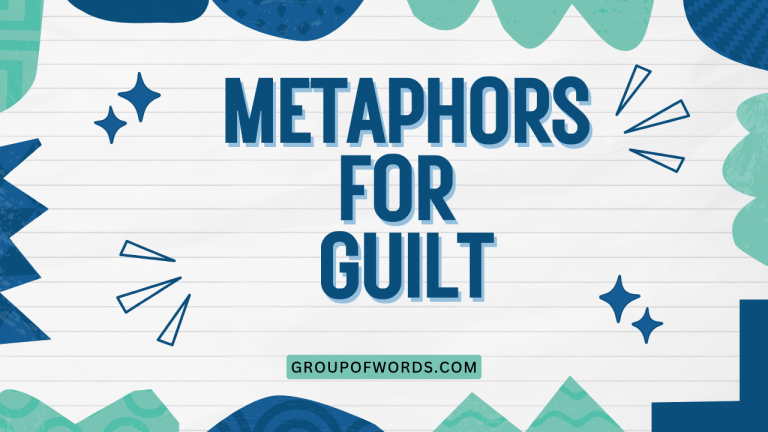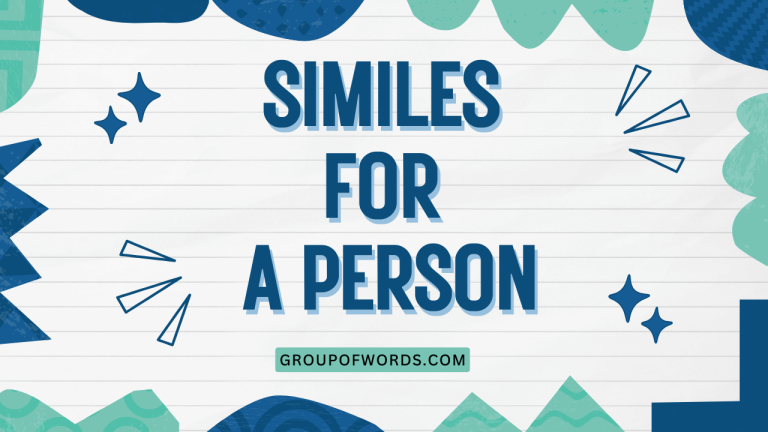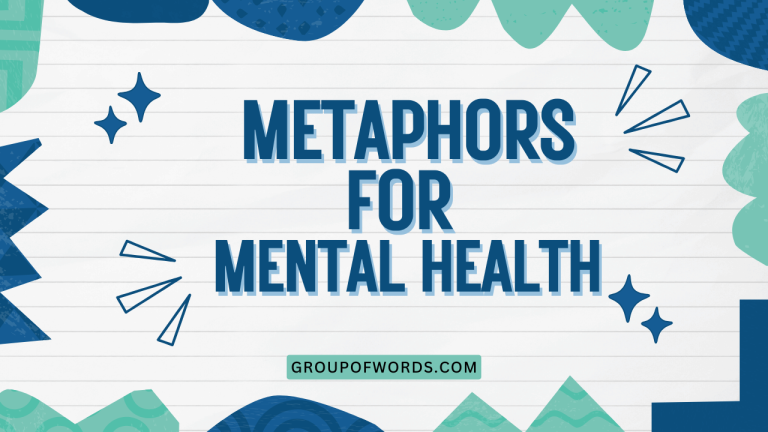Similes for Sky: Enhancing Your English Vocabulary
The sky, with its ever-changing hues and vast expanse, has always been a source of inspiration for writers and poets. Understanding how to describe it effectively using similes can significantly enhance your English vocabulary and writing skills.
This article provides a comprehensive guide to using similes to depict the sky in various contexts. Whether you’re a student, a writer, or simply an English language enthusiast, this guide will equip you with the knowledge and tools to master the art of descriptive writing.
This article will explore the definition of similes, their structural components, different categories based on the sky’s appearance, usage rules, common mistakes, and practice exercises to solidify your understanding.
Table of Contents
- Introduction
- Definition of Simile
- Structural Breakdown of Similes
- Types of Sky Similes
- Examples of Sky Similes
- Usage Rules for Sky Similes
- Common Mistakes When Using Sky Similes
- Practice Exercises
- Advanced Topics in Sky Similes
- Frequently Asked Questions (FAQ)
- Conclusion
Definition of Simile
A simile is a figure of speech that compares two unlike things using the words “like” or “as.” It is a powerful tool in descriptive writing, allowing writers to create vivid images and convey complex emotions by drawing parallels between familiar objects and abstract concepts. Similes help to make descriptions more relatable and engaging for the reader.
The primary purpose of a simile is to enhance understanding and create a more impactful image in the reader’s mind. By comparing something unfamiliar (like the sky) to something familiar (like a cotton ball or a fiery furnace), the writer can paint a clearer and more memorable picture.
Similes are commonly used in poetry, prose, and everyday conversation to add color and depth to language.
Similes are found extensively in literature, poetry, and even everyday speech. They help bridge the gap between the abstract and the concrete, allowing readers or listeners to grasp complex ideas through simple comparisons.
Recognizing and understanding similes is essential for both comprehending and crafting effective and evocative language.
Structural Breakdown of Similes
A simile typically consists of three main components: the subject (the thing being described), the linking word (“like” or “as”), and the object of comparison (the thing to which the subject is being compared). Understanding these components is crucial for constructing grammatically correct and effective similes.
The structure can be represented as follows: Subject + Linking Word + Object of Comparison. For example, in the simile “The sky was as blue as the ocean,” the sky is the subject, “as” is the linking word, and the ocean is the object of comparison. This structure provides a clear and concise way to draw a parallel between the two elements.
The linking words “like” and “as” serve slightly different purposes. “Like” suggests a similarity or resemblance, while “as” often implies a more direct equivalence.
However, in most cases, they are interchangeable. For instance, “The sky looked like a painting” and “The sky looked as a painting” convey essentially the same meaning.
The choice between them often comes down to stylistic preference or rhythm of the sentence.
Types of Sky Similes
The sky presents a multitude of appearances, depending on the time of day, weather conditions, and geographical location. Therefore, similes used to describe the sky can be categorized based on these varying conditions.
Here, we will explore similes for different types of skies: blue, cloudy, stormy, night, and sunrise/sunset.
Similes for a Blue Sky
A blue sky is often associated with peace, tranquility, and clarity. Similes used to describe it typically evoke feelings of serenity and openness.
These similes often compare the sky to bodies of water, precious stones, or other objects that share the same vibrant blue color.
Consider the following examples, which illustrate the diverse ways to describe a blue sky using similes. Each simile captures a different nuance of the sky’s appearance, from its depth and clarity to its vastness and serenity.
These examples demonstrate how similes can add depth and richness to descriptive writing.
The table below presents examples of similes for a blue sky, each capturing a unique aspect of its appearance.
| Simile | Explanation |
|---|---|
| The sky was as blue as a robin’s egg. | Highlights the delicate, clear blue color. |
| The sky was like a sapphire, sparkling with light. | Emphasizes the precious and radiant quality of the blue. |
| The sky was as blue as the deep ocean. | Conveys the vastness and depth of the blue. |
| The sky was like a clear, blue crystal. | Suggests purity and transparency. |
| The sky was as blue as an August afternoon. | Connects the color with a specific time of year. |
| The sky was like a bluebird’s feather. | Evokes the gentle, vivid blue of nature. |
| The sky was as blue as a swimming pool. | Relates the color to a familiar, refreshing image. |
| The sky was like a painter’s perfect blue. | Implies an artistic and flawless quality. |
| The sky was as blue as a cornflower. | Compares the color to a delicate, natural bloom. |
| The sky was like a blue silk scarf. | Suggests a smooth, luxurious texture. |
| The sky was as blue as a glacier’s heart. | Highlights a cool, pure blue. |
| The sky was like a blue jay’s wing. | Evokes the vibrant, natural blue of a bird. |
| The sky was as blue as the summer sky above Greece. | Associates the color with a specific, idyllic location. |
| The sky was like a blue enamel. | Suggests a smooth, glossy surface. |
| The sky was as blue as a morning glory. | Compares the color to a vibrant, transient bloom. |
| The sky was like a blue velvet curtain. | Evokes a rich, deep texture. |
| The sky was as blue as a dragonfly’s body. | Highlights the iridescent, natural blue. |
| The sky was like a blue chalkboard. | Suggests a deep, matte blue. |
| The sky was as blue as the Caribbean Sea. | Associates the color with a tropical paradise. |
| The sky was like a blue marble. | Implies a smooth, swirling depth. |
| The sky was as blue as my mother’s eyes. | Connects the color with a personal, emotional memory. |
| The sky was like a digital screen set to blue. | Implies a vivid, artificial blue. |
| The sky was as blue as a Smurf. | Relates the color to a whimsical, pop-culture reference. |
| The sky was like a blue crayon. | Suggests a childlike simplicity and purity. |
| The sky was as blue as a bottle of Windex. | Relates the color to a familiar, household object. |
| The sky was like a blue raspberry popsicle. | Implies a sweet, artificial blue. |
Similes for a Cloudy Sky
A cloudy sky can evoke a range of emotions, from melancholy and introspection to anticipation and drama. Similes for cloudy skies often focus on the shapes, textures, and colors of the clouds themselves.
These similes might compare the clouds to cotton, smoke, or even abstract concepts like dreams or memories.
The following examples will illustrate the variety of ways to describe a cloudy sky. Each simile brings forth a different aspect of the sky’s appearance, capturing the essence of the clouds’ forms and their impact on the overall atmosphere.
These examples demonstrate how similes can be used to convey the mood and texture of a cloudy day.
The table below presents examples of similes for a cloudy sky, each capturing a unique aspect of its appearance.
| Simile | Explanation |
|---|---|
| The sky was like a canvas smudged with gray paint. | Emphasizes the uneven distribution of clouds. |
| The clouds were like fluffy cotton balls scattered across the sky. | Highlights the soft, light texture of the clouds. |
| The sky was as gray as an old, worn blanket. | Conveys a sense of gloom and heaviness. |
| The clouds were like ships sailing on a celestial sea. | Suggests movement and grandeur. |
| The sky was as cloudy as a bowl of milk. | Simplicity and purity of the white clouds. |
| The clouds were like a herd of sheep grazing in the heavens. | Evokes a peaceful, pastoral image. |
| The sky was as thick with clouds as a forest is with trees. | Implies density and abundance. |
| The clouds were like sculptures carved from smoke. | Suggests delicate, ephemeral shapes. |
| The sky was as cloudy as a worried mind. | Connects the sky’s appearance to a state of anxiety. |
| The clouds were like ghostly apparitions. | Evokes a sense of mystery and unease. |
| The sky was as gray as a battleship. | Highlights the heavy, metallic tone of the clouds. |
| The clouds were like mountains of meringue. | Suggests a light, airy sweetness. |
| The sky was as overcast as a forgotten memory. | Connects the sky’s appearance to a sense of loss. |
| The clouds were like brushstrokes of white on a blue backdrop. | Implies an artistic and deliberate arrangement. |
| The sky was as cloudy as pea soup. | Relates to a thick, homogenous appearance. |
| The clouds were like pillows piled high in the sky. | Evokes comfort and restfulness. |
| The sky was as gray as a rainy Monday morning. | Associates the sky with a feeling of drudgery. |
| The clouds were like ink stains spreading across paper. | Suggests a dark, ominous presence. |
| The sky was as cloudy as a glass of muddy water. | Implies opacity and impurity. |
| The clouds were like a field of snow. | Conveys a sense of vastness and purity. |
| The sky was as cloudy as a smoker’s lungs. | Connects the color with a negative image of health and decay. |
| The clouds were like a giant’s breath. | Implies a powerful, almost mythical presence. |
| The sky was as cloudy as a black and white movie. | Relates the color to a nostalgic, classic image. |
| The clouds were like a collection of unfulfilled dreams. | Evokes a sense of longing and incompleteness. |
| The sky was as cloudy as a dirty window. | Implies a lack of clarity and vision. |
| The clouds were like the aftermath of a pillow fight. | Suggests a playful, chaotic energy. |
Similes for a Stormy Sky
A stormy sky is characterized by drama, intensity, and often fear. Similes used to describe it tend to focus on the dark colors, turbulent movements, and powerful forces at play.
These similes might compare the sky to a battlefield, a raging beast, or a cauldron of brewing chaos.
The following examples will illustrate the diverse ways to capture the essence of a stormy sky. Each simile brings forth a different aspect of the storm’s power and intensity, from the dark, foreboding colors to the violent movements of the clouds.
These examples demonstrate how similes can be used to convey the raw emotion and energy of a storm.
The table below presents examples of similes for a stormy sky, each capturing a unique aspect of its appearance.
| Simile | Explanation |
|---|---|
| The sky was like a battlefield, with clouds clashing like armies. | Emphasizes the conflict and chaos of the storm. |
| The sky was as dark as a raven’s wing. | Highlights the deep, ominous black color. |
| The clouds were like angry gods, unleashing their fury. | Conveys a sense of divine power and wrath. |
| The sky was like a pressure cooker, ready to explode. | Suggests a build-up of tension and impending release. |
| The sky was as stormy as a troubled relationship. | Relates the sky to a state of emotional turmoil. |
| The clouds were like curtains drawn before a tragedy. | Evokes a sense of foreboding and impending doom. |
| The sky was as turbulent as a stormy sea. | Implies violent movement and instability. |
| The clouds were like the shadows of nightmares. | Suggests fear and unease. |
| The sky was as stormy as a politician’s broken promises. | Connects the sky to a feeling of betrayal and distrust. |
| The clouds were like demons dancing in the heavens. | Evokes a sense of malevolence and chaos. |
| The sky was as dark as a bottomless pit. | Highlights the depth and hopelessness of the storm. |
| The clouds were like a witch’s brew simmering overhead. | Suggests a dangerous, unpredictable concoction. |
| The sky was as stormy as a teenager’s mood swings. | Connects the sky to a state of emotional volatility. |
| The clouds were like a swarm of angry bees. | Implies a threatening, buzzing energy. |
| The sky was as stormy as a broken heart. | Relates to feelings of pain and despair. |
| The clouds were like the aftermath of a great battle. | Evokes a sense of destruction and loss. |
| The sky was as dark as a forgotten tomb. | Highlights the sense of decay and neglect. |
| The clouds were like a monster’s gaping mouth. | Suggests danger and terror. |
| The sky was as stormy as a volcano erupting. | Implies a powerful, destructive force. |
| The clouds were like a gathering of vengeful spirits. | Conveys a sense of impending retribution. |
| The sky was as stormy as a horror movie climax. | Connects the color with a feeling of intense fear and suspense. |
| The clouds were like a battlefield filled with smoke and fire. | Implies intense conflict and destruction. |
| The sky was as stormy as a toddler throwing a tantrum. | Relates the color to a chaotic, uncontrolled outburst. |
| The clouds were like the nightmares of a restless sleeper. | Evokes a sense of dread and unease. |
| The sky was as stormy as a haunted house. | Implies a sense of darkness and supernatural presence. |
| The clouds were like a symphony of thunder and lightning. | Suggests a powerful, dramatic performance. |
Similes for a Night Sky
The night sky is often associated with mystery, wonder, and introspection. Similes used to describe it typically focus on the stars, the moon, and the darkness that envelops everything.
These similes might compare the stars to diamonds, the moon to a pearl, or the darkness to a velvet curtain.
The following examples will illustrate the diverse ways to capture the essence of a night sky. Each simile brings forth a different aspect of the night’s beauty and mystery, from the twinkling stars to the soft glow of the moon.
These examples demonstrate how similes can be used to convey the sense of wonder and tranquility that the night sky evokes.
The table below presents examples of similes for a night sky, each capturing a unique aspect of its appearance.
| Simile | Explanation |
|---|---|
| The stars were like diamonds scattered across a velvet cloth. | Emphasizes the brilliance and contrast of the stars. |
| The moon was like a pearl in the inky sky. | Highlights the soft, luminous quality of the moon. |
| The night sky was as black as a deep, endless ocean. | Conveys the vastness and mystery of the darkness. |
| The stars were like distant campfires in the wilderness. | Suggests warmth and guidance in the darkness. |
| The night sky was as peaceful as a sleeping child. | Relates the sky to a state of tranquility and innocence. |
| The moon was like a silver coin tossed into the night. | Evokes a sense of simplicity and value. |
| The night sky was as silent as a secret. | Implies mystery and unspoken knowledge. |
| The stars were like eyes watching from afar. | Suggests a sense of observation and awareness. |
| The night sky was as deep as a philosopher’s thoughts. | Connects the sky to a state of contemplation and insight. |
| The moon was like a spotlight shining on the world. | Evokes a sense of illumination and focus. |
| The night sky was as dark as a vampire’s heart. | Highlights the sense of darkness and emptiness. |
| The stars were like breadcrumbs leading the way home. | Suggests guidance and hope in the darkness. |
| The night sky was as vast as the universe itself. | Conveys the immense scale of the cosmos. |
| The moon was like a guardian watching over the earth. | Implies protection and care. |
| The night sky was as mysterious as an unsolved riddle. | Relates to feelings of intrigue and uncertainty. |
| The stars were like tears of joy in the heavens. | Evokes a sense of happiness and celebration. |
| The night sky was as dark as a raven’s shadow. | Highlights the sense of darkness and mystery. |
| The stars were like fireflies dancing in the night. | Suggests a sense of magic and wonder. |
| The night sky was as quiet as a church mouse. | Implies a sense of peace and stillness. |
| The moon was like a clock in the sky. | Conveys a sense of time and regularity. |
| The night sky was as dark as the inside of a coffin. | Connects the color with a feeling of death and finality. |
| The stars were like a million tiny lightbulbs. | Implies a vivid, artificial glow. |
| The night sky was as silent as the grave. | Relates the color to a complete absence of sound. |
| The stars were like a collection of lost souls. | Evokes a sense of sadness and longing. |
| The night sky was as dark as a cup of black coffee. | Implies a strong, bitter taste. |
| The stars were like a celestial connect-the-dots game. | Suggests a playful, imaginative activity. |
Similes for Sunrise and Sunset
Sunrise and sunset are times of dramatic color and transition. Similes used to describe them often focus on the vibrant hues, the changing light, and the sense of awe and wonder that these times of day evoke.
These similes might compare the sky to a painting, a fire, or a dream.
The following examples will illustrate the diverse ways to capture the essence of a sunrise or sunset. Each simile brings forth a different aspect of the sky’s beauty, from the fiery colors to the soft, fading light.
These examples demonstrate how similes can be used to convey the sense of wonder and tranquility that these times of day evoke.
The table below presents examples of similes for sunrise and sunset, each capturing a unique aspect of its appearance.
| Simile | Explanation |
|---|---|
| The sunset was like a painting, with colors blending seamlessly. | Emphasizes the artistic quality of the sunset. |
| The sunrise was like a fire spreading across the horizon. | Highlights the intensity and warmth of the rising sun. |
| The sunset was as colorful as a tropical bird’s feathers. | Conveys the vibrant and exotic hues. |
| The sunrise was like a promise of a new beginning. | Suggests hope and optimism. |
| The sunset was as peaceful as a lullaby. | Relates the sky to a state of tranquility and rest. |
| The sunrise was like a gentle awakening. | Evokes a sense of calm and renewal. |
| The sunset was as dramatic as a stage performance. | Implies spectacle and grandeur. |
| The sunrise was like a burst of energy. | Suggests vitality and enthusiasm. |
| The sunset was as beautiful as a dream. | Connects the sky to a state of fantasy and wonder. |
| The sunrise was like a song of hope. | Evokes a sense of optimism and joy. |
| The sunset was as fiery as a dragon’s breath. | Highlights the intensity and power of the colors. |
| The sunrise was like a rebirth of the world. | Suggests renewal and transformation. |
| The sunset was as serene as a still lake. | Conveys a sense of peace and calmness. |
| The sunrise was like a gentle caress. | Implies tenderness and care. |
| The sunset was as fleeting as a memory. | Relates to feelings of nostalgia and transience. |
| The sunrise was like a celebration of life. | Evokes a sense of joy and gratitude. |
| The sunset was as golden as a king’s treasure. | Highlights the richness and value of the colors. |
| The sunrise was like a fresh start. | Suggests opportunity and potential. |
| The sunset was as vibrant as a carnival. | Implies excitement and energy. |
| The sunrise was like a call to adventure. | Evokes a sense of curiosity and exploration. |
| The sunset was as colorful as a rainbow. | Connects the color with a feeling of hope and promise. |
| The sunrise was like a new chapter. | Implies a fresh start and new beginnings. |
| The sunset was as romantic as a candlelit dinner. | Relates the color to a feeling of love and intimacy. |
| The sunrise was like a symphony of light. | Evokes a sense of harmony and beauty. |
| The sunset was as peaceful as a meditation session. | Implies a feeling of calm and mindfulness. |
| The sunrise was like a promise of a beautiful day. | Suggests optimism and happiness. |
Examples of Sky Similes
Here are some additional examples of sky similes, categorized for clarity:
- Blue Sky: The sky was as blue as a jaybird’s feather.
- Cloudy Sky: The clouds were like dirty cotton balls strewn across the horizon.
- Stormy Sky: The sky was as angry as a hornet’s nest that had been kicked.
- Night Sky: The stars shone like a million distant headlights.
- Sunrise: The sunrise was like a pink and orange sherbet swirl.
- Sunset: The sunset burned like a dying ember in the west.
Usage Rules for Sky Similes
When using similes to describe the sky, it’s important to follow certain rules to ensure clarity and effectiveness. The comparison should be logical and relevant, and the simile should enhance the reader’s understanding of the sky’s appearance.
Avoid clichés and strive for originality to create a more impactful image.
Rule 1: Ensure Logical Comparison: The object of comparison should share a relevant characteristic with the sky. For example, comparing the blue sky to the ocean is logical because both share the quality of blueness. Comparing the sky to a refrigerator would not be effective, as they lack a clear, shared characteristic.
Rule 2: Avoid Clichés: While some common similes can be effective, overuse can make your writing seem unoriginal and uninspired. Try to come up with fresh and unique comparisons. Instead of saying “The sky was as blue as the sky can be,” try “The sky was as blue as a robin’s egg, catching the light just so.”
Rule 3: Consider the Context: The simile should fit the tone and context of your writing. A simile that is appropriate for a poem might not be suitable for a scientific report. Choose similes that align with the overall mood and purpose of your piece.
Rule 4: Maintain Clarity: The simile should be easy to understand. Avoid obscure or overly complex comparisons. The goal is to enhance understanding, not to confuse the reader. If the comparison requires too much explanation, it may not be an effective simile.
Rule 5: Use Sensory Details: Effective similes often appeal to the senses, creating a more vivid and memorable image. For example, instead of saying “The sky was like a color,” try “The sky was like a watercolor painting, with soft, blended hues that seemed to shift in the light.”
Common Mistakes When Using Sky Similes
One common mistake is using clichés. A cliché is an overused expression that has lost its originality and impact.
For example, “The sky was as blue as the ocean” is a common simile, but it lacks originality. A better option would be: “The sky was as blue as a robin’s egg.”
Another mistake is making illogical comparisons. The object of comparison should share a relevant characteristic with the sky.
For example, “The sky was like a brick” is not an effective simile because the sky and a brick do not share any obvious similarities.
A third mistake is using similes that are too complex or confusing. The purpose of a simile is to enhance understanding, not to obscure it.
Choose comparisons that are clear and easy to grasp. Avoid using obscure references or overly abstract concepts.
Finally, some writers overuse similes, which can make their writing feel forced and unnatural. Use similes sparingly and only when they truly enhance the description.
Correct: The stormy sky was like an angry beast, growling with thunder.
Incorrect: The stormy sky was like a table.
Practice Exercises
Complete the following sentences by adding an appropriate simile to describe the sky. Try to use original and creative comparisons.
| Question | Answer |
|---|---|
| 1. The blue sky was as clear as __________. | 1. The blue sky was as clear as a freshly cleaned window. |
| 2. The cloudy sky looked like __________. | 2. The cloudy sky looked like a field of fluffy sheep. |
| 3. The stormy sky was as dark as __________. | 3. The stormy sky was as dark as a bottomless well. |
| 4. The night sky sparkled like __________. | 4. The night sky sparkled like crushed diamonds. |
| 5. The sunrise was like __________. | 5. The sunrise was like a painter’s palette of vibrant colors. |
| 6. The sunset burned like __________. | 6. The sunset burned like a fiery kiss goodnight. |
| 7. The morning sky was as soft as __________. | 7. The morning sky was as soft as a baby’s breath. |
| 8. The afternoon sky stretched out like __________. | 8. The afternoon sky stretched out like an endless blue carpet. |
| 9. The twilight sky was as mysterious as __________. | 9. The twilight sky was as mysterious as a hidden world. |
| 10. The winter sky was as cold as __________. | 10. The winter sky was as cold as a glacier’s heart. |
Exercise 2: Identify the simile in each sentence and explain what two things are being compared.
| Question | Answer |
|---|---|
| 1. The sky was like a giant blue umbrella. | 1. Simile: “like a giant blue umbrella.” Comparison: sky and umbrella. |
| 2. The clouds were as white as freshly fallen snow. | 2. Simile: “as white as freshly fallen snow.” Comparison: clouds and snow. |
| 3. The storm clouds gathered like an army on the horizon. | 3. Simile: “like an army on the horizon.” Comparison: storm clouds and army. |
| 4. The stars were like a million tiny candles in the night. | 4. Simile: “like a million tiny candles in the night.” Comparison: stars and candles. |
| 5. The sunrise painted the sky like a masterpiece. | 5. Simile: “like a masterpiece.” Comparison: sunrise and masterpiece. |
| 6. The sunset glowed like molten gold. | 6. Simile: “like molten gold.” Comparison: sunset and molten gold. |
| 7. The twilight sky hung like a velvet curtain. | 7. Simile: “like a velvet curtain.” Comparison: twilight sky and velvet curtain. |
| 8. The summer sky was as endless as a dream. | 8. Simile: “as endless as a dream.” Comparison: summer sky and dream. |
| 9. The autumn sky was as crisp as an apple. |
